Disclosure: This article contains affiliate links. We may earn a commission from purchases at no extra cost to you, which helps our travel content.
The afternoon sun casts long shadows across Cordoba's ancient stones as my wife and I navigate the labyrinthine streets of the Jewish Quarter. It's our third visit to Spain but our first to this Andalusian gem, where Roman, Moorish, and Christian influences have created not just architectural splendor but a culinary landscape as layered as the city's history. Having spent years exploring European cities through their food cultures since relocating from Milwaukee to Glasgow, I've developed something of a sixth sense for distinguishing tourist traps from authentic local haunts. In Cordoba, this distinction feels particularly important. While tour groups cluster around the Mezquita-Cathedral and the Roman Bridge (both architectural marvels worthy of your time), the soul of Cordobés cuisine thrives in narrow alleyways and behind unassuming doorways where generations of families have perfected recipes that tell the story of this crossroads civilization. This weekend guide will take you beyond the typical tourist experience into the heart of Cordoba's gastronomic culture—where the act of sharing small plates becomes a delightful journey through history, tradition, and innovation.
Understanding Cordoba's Tapas Culture
Before diving into specific recommendations, it's worth understanding what makes Cordoba's tapas scene distinct from what you might find in Madrid, Barcelona, or even nearby Seville. While the concept of small shared plates remains consistent throughout Spain, each region infuses its tapas with local ingredients, traditions, and historical influences.
Cordoba's cuisine bears the unmistakable fingerprints of its multicultural past. The Moorish occupation left behind a love for aromatic spices, nuts, and fruits in savory dishes. Roman foundations contributed techniques for preserving and curing meats. The Jewish community, once vibrant in the city, introduced unique preparations of vegetables and stews that have evolved over centuries.
What struck me most during our weekend exploration was how Cordobés tapas culture remains wonderfully democratic. Unlike some Spanish cities where tapas have become precious, Instagram-worthy bites with prices to match, Cordoba maintains the tradition of serving a small tapa free with each drink in many establishments. This practice, increasingly rare in tourist-heavy Spanish cities, speaks to the local commitment to making good food accessible to everyone.
The rhythm of tapas dining here follows the Spanish clock—lunch typically starts around 2:00 PM, while dinner rarely begins before 9:00 PM. For visitors, this can require some adjustment, but embracing this schedule allows you to experience the city as locals do. The beauty of tapas is that it's perfectly acceptable to visit multiple establishments in one meal, having a drink and a tapa at each before moving on to the next.
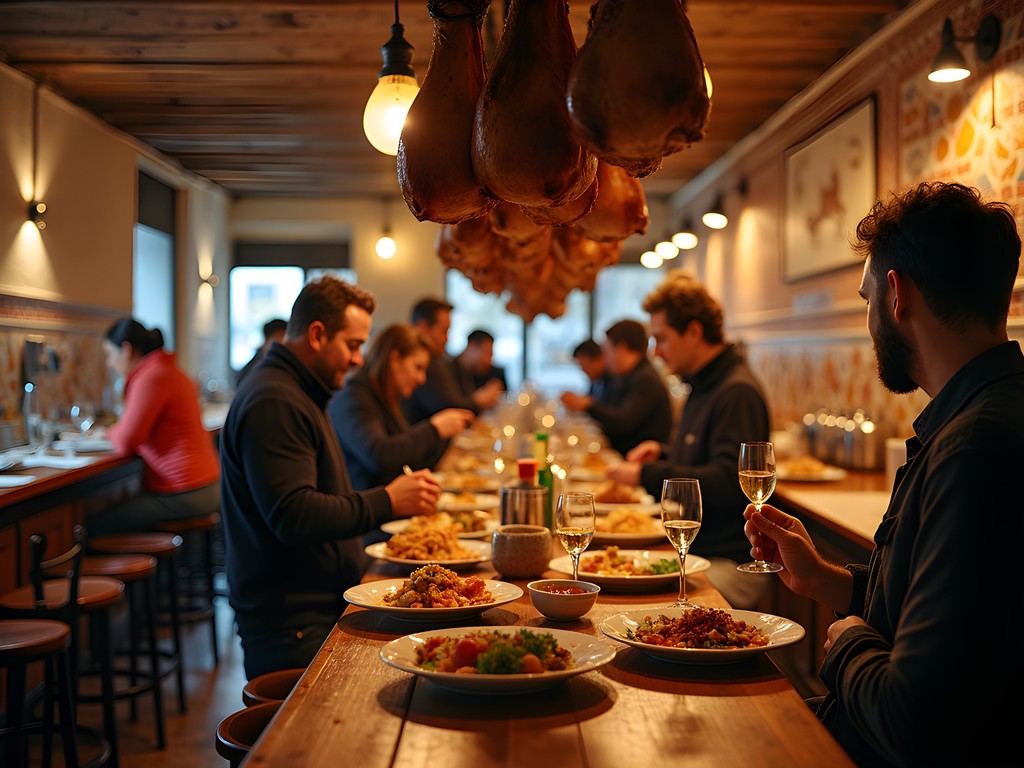
💡 Pro Tips
- Most authentic tapas bars serve food from about 1:30-4:00 PM for lunch and 8:30 PM-midnight for dinner
- Look for places where locals are standing at the bar rather than sitting at tables
- Many traditional bars won't have English menus—bring a small Spanish phrasebook or translation app
The Tabernas of the Jewish Quarter
Cordoba's Jewish Quarter (Judería) is undoubtedly the most visited area of the city, and for good reason—its narrow, winding streets and flower-adorned courtyards create an atmosphere of timeless charm. However, this popularity means that many restaurants cater exclusively to tourists, serving mediocre food at inflated prices.
Look beyond the main thoroughfares, however, and you'll discover family-run tabernas that have been serving locals for generations. One such gem is Taberna La Montillana, tucked away on a quiet side street. When my wife and I stumbled upon it during our first evening, we knew we'd found something special—the animated conversations in rapid-fire Spanish, the absence of English menus, and the warm welcome from the proprietor despite our linguistic limitations.
Here, you must try the salmorejo—Cordoba's signature cold soup similar to gazpacho but thicker and creamier, typically topped with hard-boiled egg and jamón. The version at La Montillana was revelatory, silky and complex with just the right balance of tomato acidity and olive oil richness.
Another hidden treasure is Casa Pepe de la Judería, which despite its location near tourist hotspots maintains authentic quality and reasonable prices. Their berenjenas con miel (fried eggplant drizzled with honey) exemplifies the Moorish influence on local cuisine—the contrast between the crisp, savory eggplant and sweet honey creates a memorable flavor combination that had us ordering a second plate.
For an even more local experience, venture to Taberna Los Mochuelos on the quarter's edge. Their montaditos (small open-faced sandwiches) topped with various combinations of cured meats, cheeses, and house-made spreads provide the perfect accompaniment to a glass of local Montilla-Moriles wine, an underappreciated cousin to sherry that deserves wider recognition.
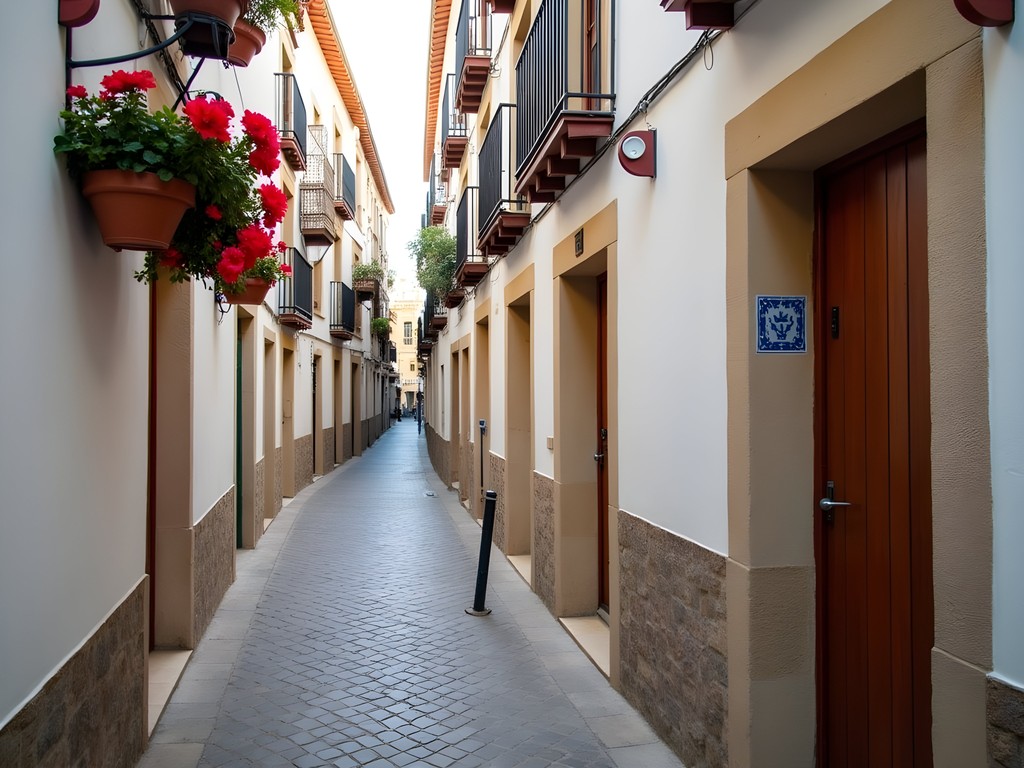
💡 Pro Tips
- Visit tabernas between main meal times (5-8 PM) for a more relaxed experience with the staff
- Order Montilla-Moriles wines instead of more common Spanish varieties for an authentic local experience
- Ask for the 'tapa del día' (tapa of the day) which often features seasonal ingredients not on the regular menu
Beyond the Center: Local Favorites in San Andrés
While the historic center draws most visitors, some of Cordoba's most authentic culinary experiences await in the San Andrés neighborhood, just a 15-minute walk north of the Mezquita. This residential area, largely untouched by tourism, offers a glimpse into everyday Cordobés life and food culture.
On our second day, armed with recommendations from our hotel's receptionist (always ask locals for their favorite spots!), we ventured into this district and discovered Taberna El Gallo, a no-frills establishment where the focus is squarely on the food. The flamenquín—a local specialty consisting of serrano ham wrapped in pork loin, then breaded and fried—was perfectly executed, crisp outside and succulent within. Paired with a cold caña (small beer), it exemplified the straightforward deliciousness that characterizes the best Spanish cuisine.
Nearby, Bar Santos offers what many locals consider the best tortilla española in Cordoba. The debate over whether tortilla should be served runny or firm is serious business in Spain, and Santos falls decisively in the slightly runny camp—their version oozes just enough when cut to create a luxurious mouthfeel while maintaining its structure. We visited mid-afternoon when the bar was filled with local workers on their lunch break, always a good sign.
For those interested in how architecture influences dining culture (a particular passion of mine given my architectural history background), the traditional taverns in this area offer fascinating case studies in how spaces evolve to meet social needs. Many feature multiple rooms that create natural temperature regulation—cool tile-lined spaces for summer and warmer wood-paneled sections for winter dining.
To capture these experiences and the architectural details that make each venue unique, I've found my compact camera invaluable. Its discreet size doesn't disrupt the authentic atmosphere of these establishments, while the quality rivals bulkier DSLRs for documenting both food and interiors in various lighting conditions.
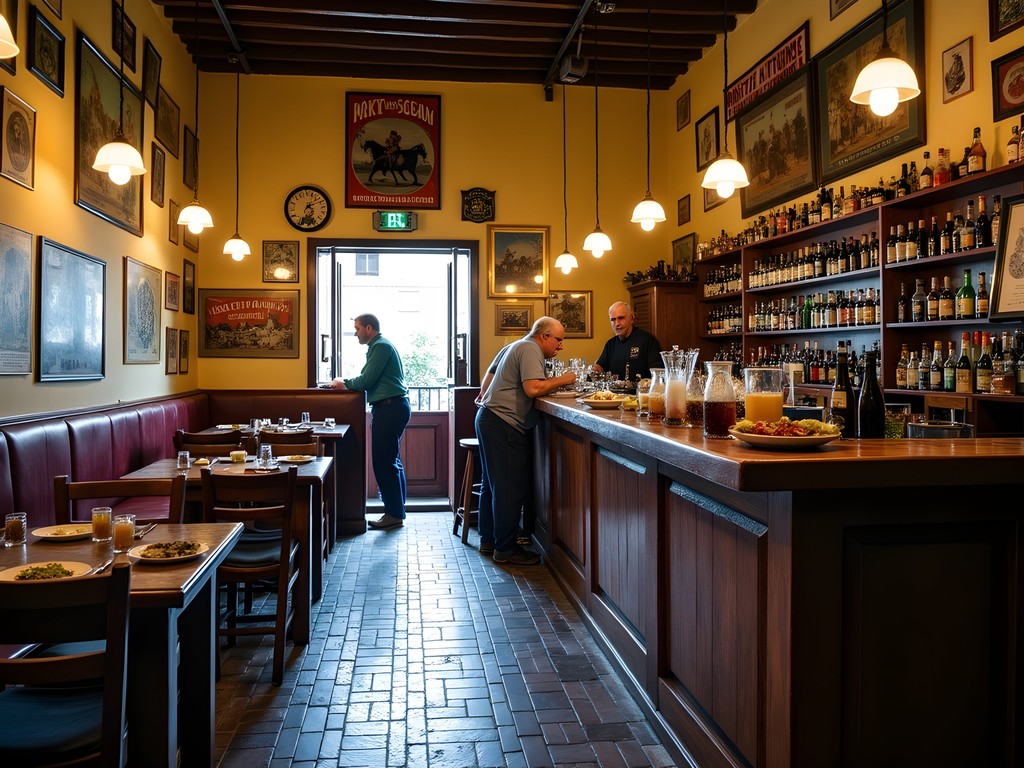
💡 Pro Tips
- Visit San Andrés during lunchtime (2-3:30 PM) when local workers fill the bars for their midday meal
- Most places in this neighborhood don't accept credit cards, so bring cash
- Try the local Cordoba craft beer 'Califa' which pairs beautifully with richer tapas
Market to Table: Mercado Victoria
No culinary exploration of Cordoba would be complete without visiting Mercado Victoria, the city's premier food hall located in the picturesque Victoria Gardens. Unlike traditional markets that primarily sell raw ingredients, Mercado Victoria functions as a gourmet food court where various vendors offer prepared specialties in a communal dining setting.
This concept bridges the gap between traditional tapas bars and more formal restaurants, providing an excellent opportunity to sample a wide variety of Cordobés and Andalusian specialties in one location. The market's glass and iron structure—a beautiful example of architectural repurposing—creates a light-filled space that's particularly pleasant during Cordoba's frequent sunny days.
During our visit, we developed a strategy that I'd recommend to any couple: divide and conquer. My wife and I would each visit different stalls, order one or two small plates, then meet at a table to share our discoveries. This approach allowed us to sample twice as many offerings without overordering.
Standout stalls included La Salmoreteca, which specializes in variations of Cordoba's famous salmorejo soup. Their tasting flight offers three different versions—traditional tomato, beet with goat cheese, and avocado with crab—providing a fascinating study in how a basic technique can yield dramatically different results with subtle ingredient changes.
For those interested in Spanish wines, the market's wine bar offers an excellent selection by the glass, including local varieties that rarely make it to export markets. I was particularly impressed with their collection of Montilla-Moriles wines, which are produced just outside Cordoba and range from bone-dry to lusciously sweet.
To keep track of our favorite discoveries, I used my travel journal to note standout dishes and wines. This old-school approach might seem quaint in the age of smartphone photos, but I've found that the act of writing descriptions helps cement flavors in memory far better than scrolling through images months later.

💡 Pro Tips
- Visit Mercado Victoria during off-peak hours (4-7 PM) to avoid crowds and secure seating
- Look for vendors displaying the 'KM0' sign, indicating they use local ingredients sourced within 100 kilometers
- Most stalls accept credit cards, but some smaller vendors are cash-only
Sweet Traditions: Cordoba's Pastry Legacy
While savory tapas dominate Cordoba's culinary reputation, the city's sweet traditions deserve equal attention, particularly those originating from the city's convents. For centuries, nuns have supported their communities by creating and selling elaborate pastries, many based on recipes dating back to Moorish times when almonds, honey, and spices were first combined in the distinctive sweets that now characterize Andalusian desserts.
Our exploration of Cordoba's sweet side began at Pastelería Núñez, a family-owned bakery that has been crafting traditional pastries for generations. Their alfajores—hexagonal cookies made with almond flour, honey, and spices—offer a direct taste connection to the city's Moorish past. The complex flavor profile, with notes of cinnamon, sesame, and cloves, pairs perfectly with a small glass of sweet Pedro Ximénez wine.
For a more immersive experience, we visited the Convent of Santa Cruz where nuns still sell their handmade pastries through a revolving wooden turntable called a torno. This centuries-old tradition maintains the cloistered nuns' privacy while allowing them to sell their creations. The pastel de cidra (citron pastry) we purchased was sublime—delicate pastry surrounding a filling of candied citrus that balanced sweetness with subtle bitterness.
Perhaps the most unique sweet experience came at Salon de Té La Abadia, housed in a converted chapel near the Mezquita. Here, traditional Spanish pastries share menu space with Moorish-inspired treats like pestinos (honey-glazed fritters) and torta cordobesa (a dense almond cake). The architectural setting—with soaring ceilings and remnants of religious frescoes—creates an atmosphere that connects food to the city's layered history.
To navigate between these sweet destinations while learning about the city's architectural highlights, we used a walking guide that included excellent maps and historical context. While digital apps are convenient, I find a physical guidebook invaluable for making margin notes about unexpected discoveries.
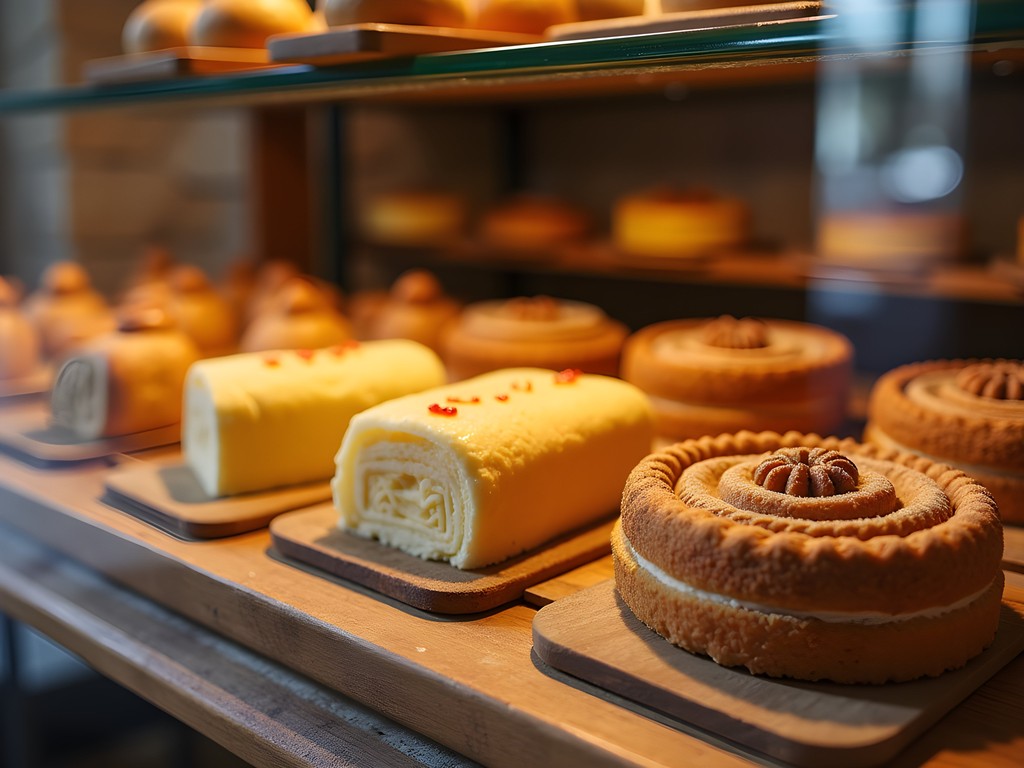
💡 Pro Tips
- Visit convent pastry shops in the morning when selections are freshest and most plentiful
- Many traditional pastries are seasonal—ask what's special during your visit
- Coffee customs differ from American expectations—café con leche is typically only consumed at breakfast, while cortado (espresso with a splash of milk) is the afternoon choice
Final Thoughts
As our weekend in Cordoba drew to a close, we found ourselves lingering over a final glass of amontillado at a small table outside Taberna La Sacristía, watching the golden hour light transform the ancient stones of the city. What had begun as a simple culinary exploration had evolved into something more profound—a journey through history, culture, and tradition expressed through the universal language of food. Cordoba's tapas aren't merely small plates; they're edible artifacts that tell the story of civilizations meeting, clashing, and ultimately creating something beautiful together. For couples seeking a weekend escape that combines architectural splendor with gastronomic discovery, Cordoba offers a perfect balance. The intimacy of sharing tapas—selecting favorites, passing plates, discovering new flavors together—creates natural moments of connection away from digital distractions. Whether you're following my exact path or creating your own tapas trail through this ancient city, remember that the most memorable experiences often happen when you venture just one street beyond where the tourist maps end.
✨ Key Takeaways
- Cordoba's tapas scene offers an accessible entry point to understanding the city's multicultural history
- The best gastronomic experiences are often found in neighborhood tabernas away from main tourist areas
- Traditional tapas culture in Cordoba remains authentic and affordable compared to other Spanish cities
📋 Practical Information
Best Time to Visit
Spring (April-May) and Fall (September-October)
Budget Estimate
€30-50 per person per day for food and drinks
Recommended Duration
2-3 days
Difficulty Level
Easy
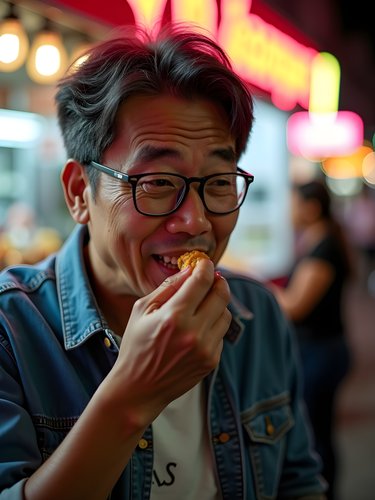
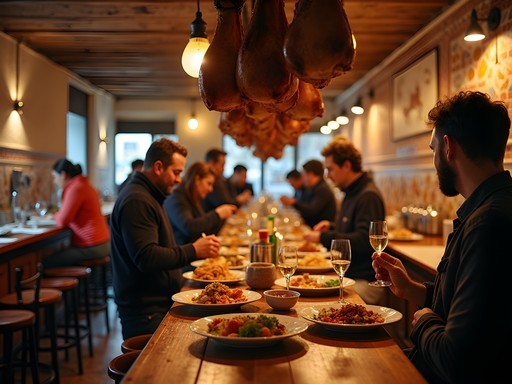

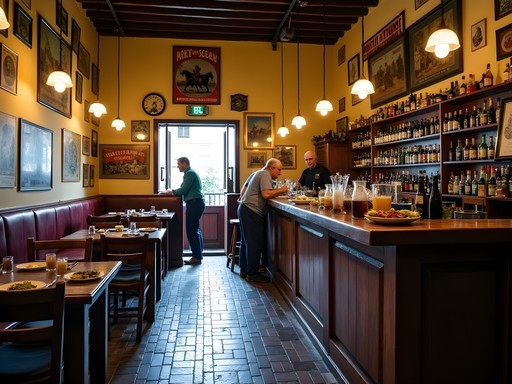
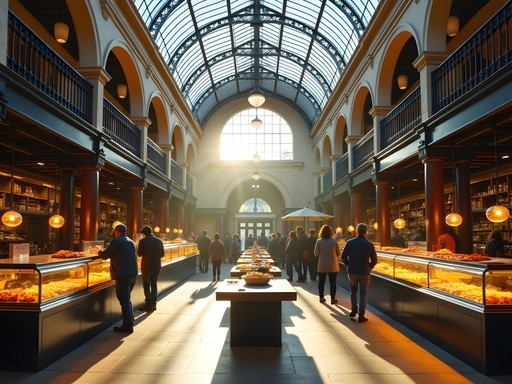




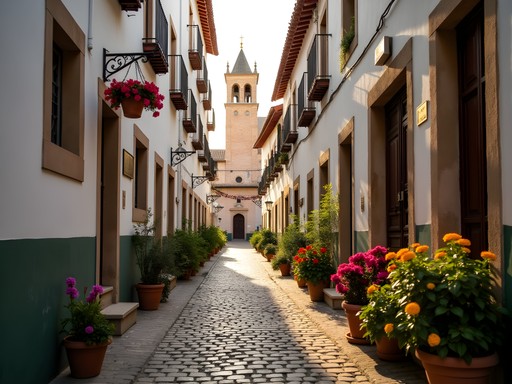






Comments
Casey Andersson
Aiden, your post transported me back to my own Cordoba adventure last spring! There's something magical about wandering those narrow streets with the scent of orange blossoms in the air, ducking into a cool, dim taberna when the afternoon sun gets too intense. I found the contrast between the historic tabernas and the modern Mercado Victoria fascinating - like experiencing two different sides of Andalusian gastronomy. My most memorable meal was at a tiny family-run place where the abuela was making tortilla española fresh to order while her grandson poured generous vermouths. No English menu, no tourists, just pure culinary bliss. Did you notice how the tapas change character as you move from the touristy center to the more residential neighborhoods? That journey of flavors tells such a rich story about the city.
tripclimber
Casey, that sounds amazing! Any chance you remember the name of that family place with the abuela? I'm planning my trip now!
Casey Andersson
It was called Bar Santos, just north of the Mosque-Cathedral. No website, just look for the locals! Go around 1pm to watch her make the tortillas fresh.
winterwanderer
Just got back from Cordoba and followed your tapas trail - SO WORTH IT! The Jewish Quarter was magical, especially in the evening when all the locals come out. We stumbled upon a tiny place called Casa Pepe that wasn't in your post but had the most incredible bull tail croquettes. Mercado Victoria was a bit touristy but still delicious. Pro tip for anyone going: many places give free tapas with drinks if you stand at the bar instead of sitting at a table! Saved us so much money and we ate like kings!
escapemood9386
Those flamenquines look amazing! Any idea what time most tapas places open?
tripclimber
This is EXACTLY what I needed! Going to Cordoba in November and I'm all about the food adventures. Did you find it easy to navigate between all these tapas spots? I'm terrible with directions and worried about getting lost in those winding streets!
winterwanderer
Not the author but I was there last year - getting lost is half the fun! I used pocket guide which has a good fold-out map. The Jewish Quarter is compact enough that you can't get too lost.
Taylor Moreau
Excellent write-up, Aiden. I was in Cordoba last month for a business conference and managed to squeeze in some tapas exploration. Taberna La Sacristía was indeed a highlight - their salmorejo is possibly the best I've had in Andalusia. I'd add that visiting during the week rather than weekends gives you a more authentic experience with fewer tourists. The locals I met also recommended Taberna El Gallo in the San Lorenzo district for exceptional berenjenas con miel (eggplant with honey). Did you make it there during your visit?
escapemood9386
Is Taberna El Gallo good for vegetarians? Heading to Cordoba next month!
Taylor Moreau
Yes, they have several vegetarian options! The berenjenas I mentioned are vegetarian, and they do excellent gazpacho and tortilla española as well.
waveperson
Those tapas pics have me drooling! Definitely adding Cordoba to my list.
coffeeblogger
That shot of the flamenquín with the sunlight streaming through your wine glass is absolutely gorgeous! What camera do you use?
mountainadventurer
That amontillado sherry you mentioned sounds amazing! Any specific brand to look for?
globezone
If you're in Cordoba on a Thursday, don't miss the 'jueves de pincho y caña' deals! Lots of bars do special prices on beer and a tapa. Great way to try more places!
Hunter Thompson
Mate, this post is EXACTLY what I needed! Heading to Cordoba next month and was worried I'd fall into tourist traps. Your tip about San Andrés neighborhood is gold - those are the authentic spots I live for! Last time I was in Spain I used my pocket phrasebook constantly to chat with locals about their favorite tapas spots. Found some absolute gems that way! Did you get a chance to try any flamenco taverns while you were there? I've heard some have amazing tapas with the performances.
coffeeblogger
Hunter - I was in Cordoba last year and went to Tablao El Cardenal for flamenco. The performance was incredible and they served decent tapas too. Not the best food in town but the atmosphere makes up for it!
Venture X
Premium card with 2X miles, $300 travel credit, Priority Pass